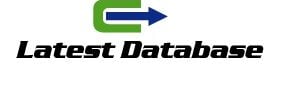If you are starting out in the world of Search Engine Marketing ( SEM ) and running your first Adwords campaigns, I suppose you often feel half lost with so many terms and actions to control. It is very important that you know some basic and essential concepts to be successful in your campaigns. In this infographic I will present you with a glossary of SEM terms that you should master to be should control safer when creating your advertising campaigns on search engines. Nowadays there is a lot of information available on the Internet about SEM and Adwords campaigns. You can find articles with very useful and valuable information for all of us on blogs, websites or on the official Adwords help page , etc.
But to continue with
My online marketing dictionary, after the SEO dictionary , I wanted to contribute my bit on this topic with a glossary, in the form of an infographic. With essential vocabulary to help you executive data find what you need in a very quick way. and visual. When you activate a new campaign in Adwords, it is essential that you control. Some concepts to improve your analysis capacity, necessary to master the elements of Search Engine Marketing and that is. Why I have prepared this infographic with essential terms that. I think you should know very well when You work with SEM campaigns. Terms such as CPC, CPM, quality score, impressions, Adsense, etc. are some of the words. That will help you master this topic and that you can learn in this article.
Without further ado
I leave you this SEM dictionary with 46 terms that you should control, which I hope will be a helpful complement and will be very useful for creating your SEM campaigns. A click is counted BTOC Database every time a user clicks on an ad link. It is considered a click, even if the user does not access the website. So there may be differences between the number of clicks an. Ad receives and the number of website views. The objective of the click is to know the effectiveness of an ad, that is, the number of users that ad attracts when they see it.
A way to set keywords so that an ad appears when. A user searches for that keyword or a variation of it. Includes spelling errors, synonyms, related searches, etc. For example, if you search for “snowboards” the ad may show if a person searches for variations such as “wooden boards” or “light board.”







